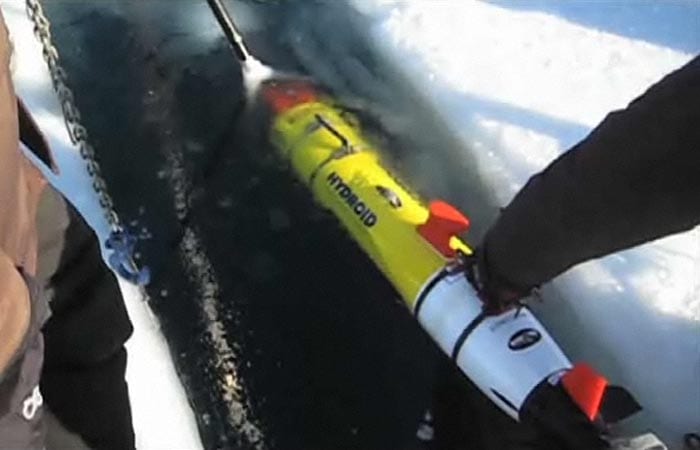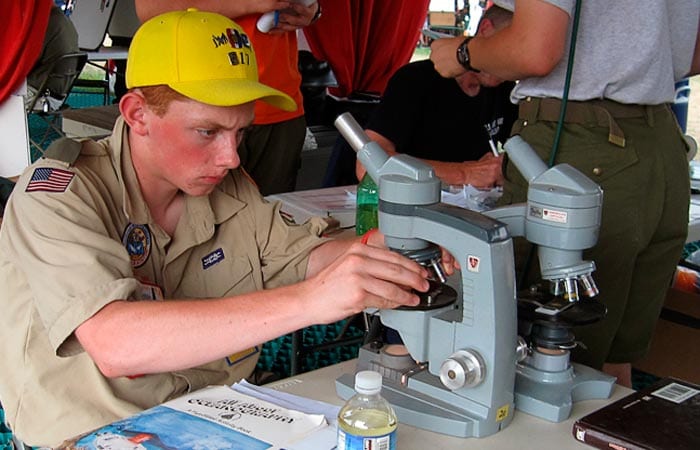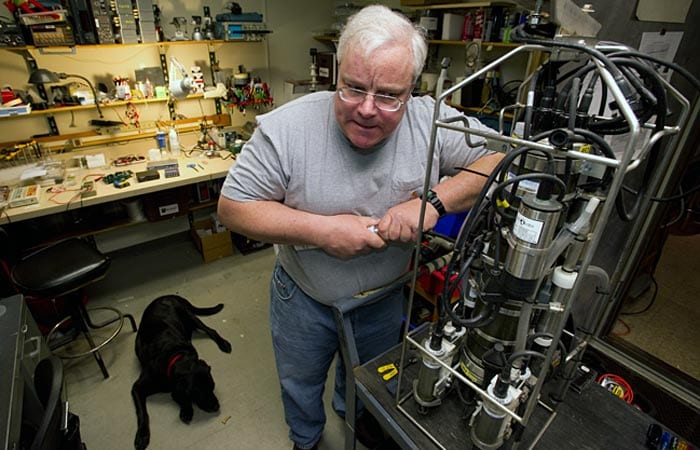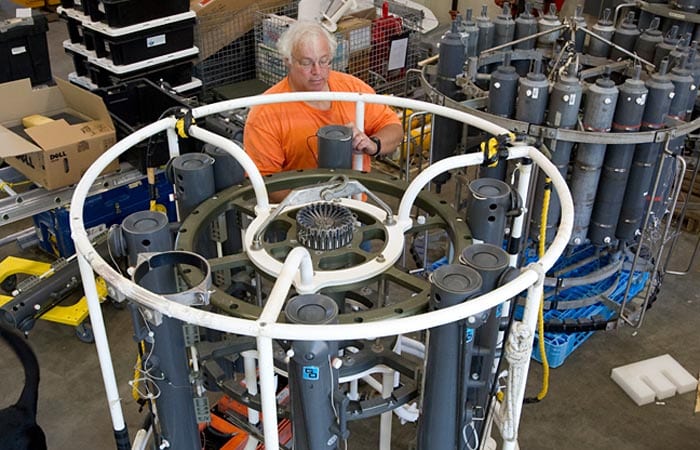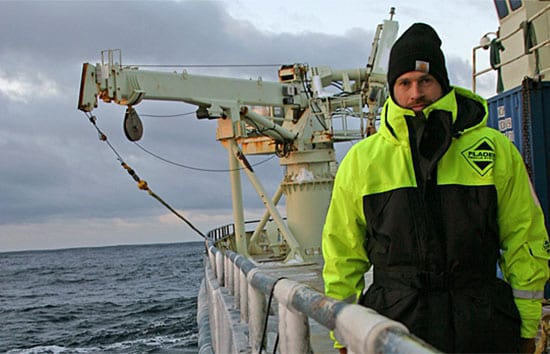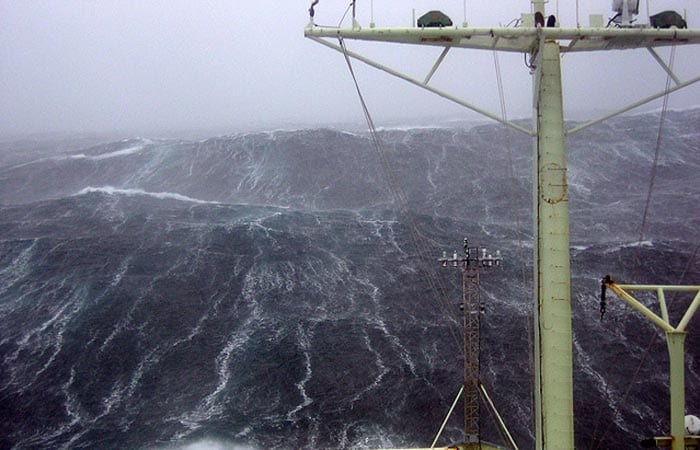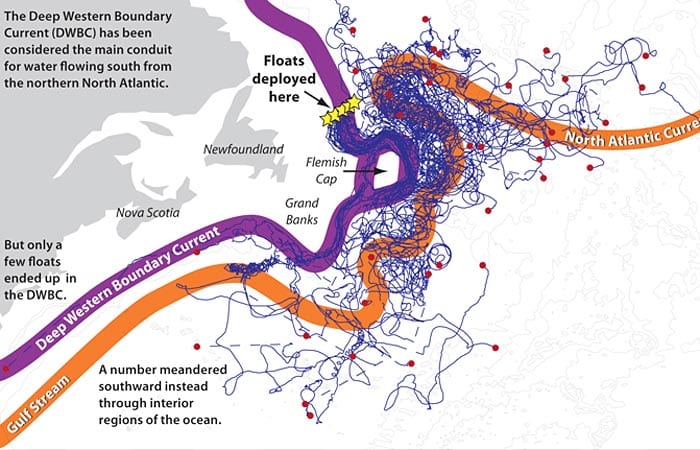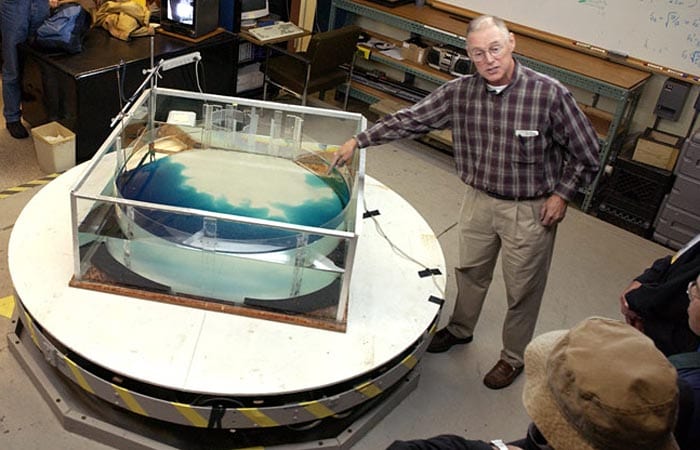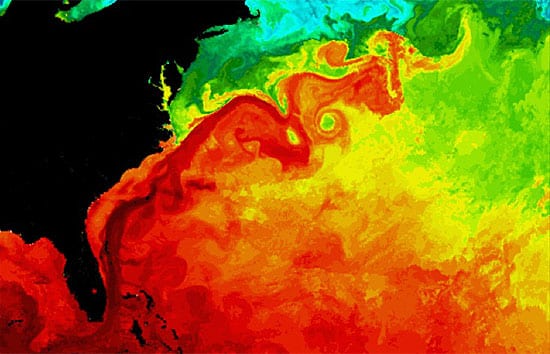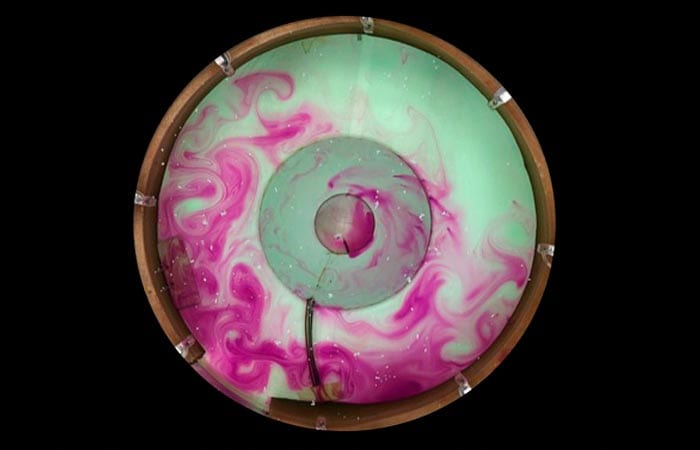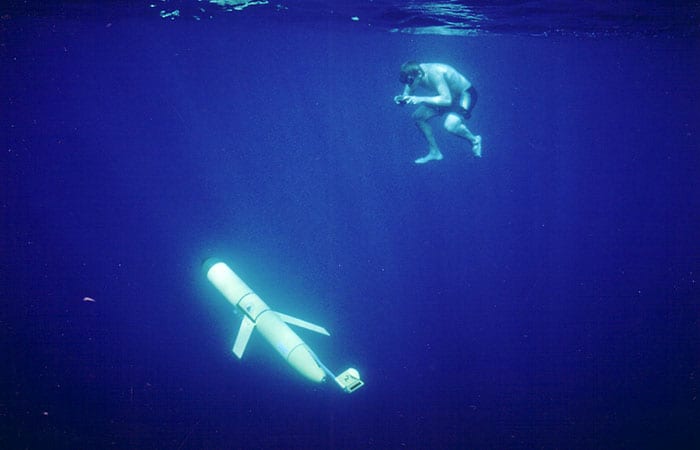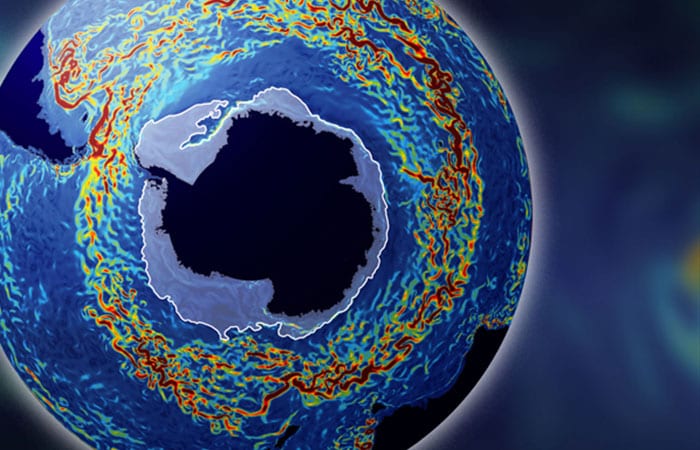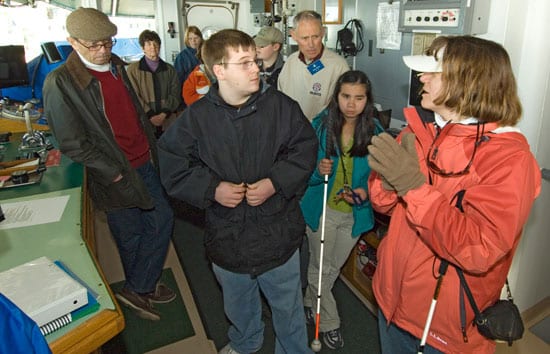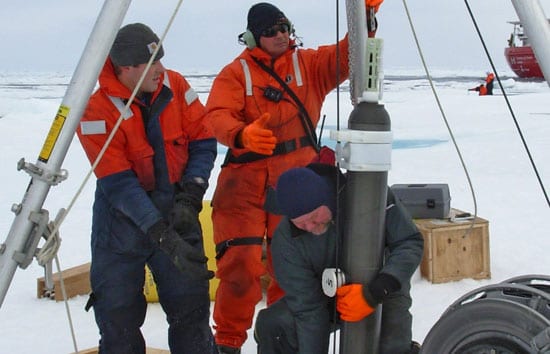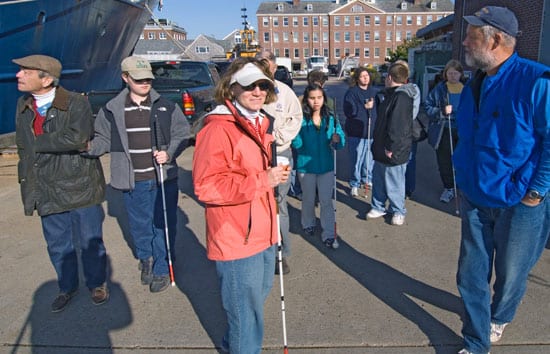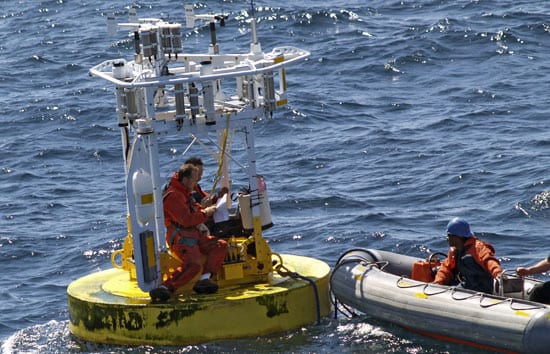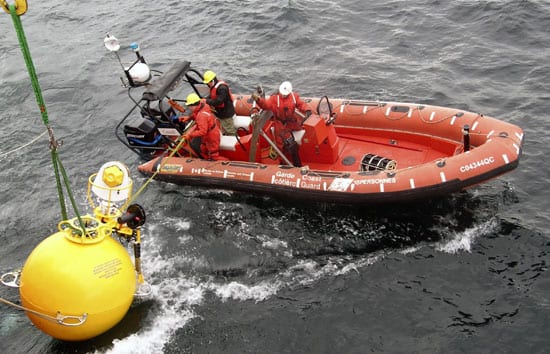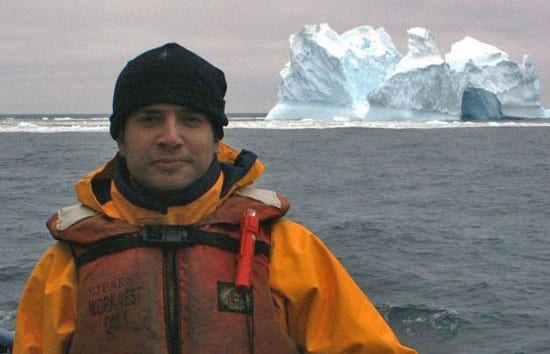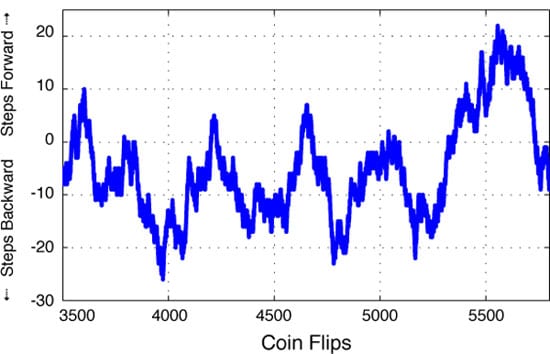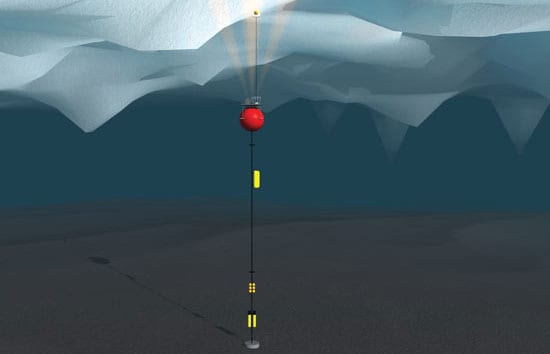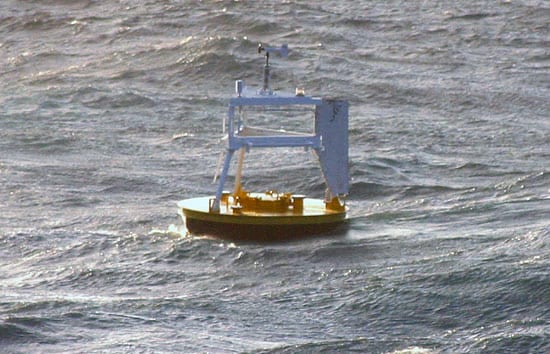Physical Oceanography
The Icebot
Boy Scouts Get a Taste of Oceanography
WHOI engineer Paul Fucile took some time off this summer to volunteer at this year’s Boy Scout National Jamboree and give a glimpse of ocean research to boys who had…
Read MoreThe Call of the Sea
Marshall Swartz’s lab is a Santa’s workshop of engineering gadgetry. Computer keyboards and circuit boards spill from cardboard boxes. Cables, wires, and an assortment of tools hang from wall hooks.…
Read MoreBasic Sea Cable Gets a High-tech Upgrade
In April, when the Deepwater Horizon petroleum drilling rig exploded and oil began gushing from a drill hole almost a mile deep in the Gulf of Mexico, scientists and engineers…
Read MoreMysteries at High Latitudes
We were watching waves, Kjetil Våge and I, from the open transom on the research vessel Knorr. It was mid-October 2008 in the Irminger Sea, where nautical standards are different.…
Read MoreInto the Wild Irminger Sea
In the Denmark Strait, Oct. 7, 2008 Maybe it’s lubberly to talk about those waves in the language of aesthetics, as if they were natural attractions like alpine peaks, but…
Read MoreFloats Reveal Unknown Ocean Pathways
Oceanographers have long known that the image they used to portray the oceans’ global circulation—called the Ocean Conveyor—was an oversimplification. It’s useful, but akin to describing Beethoven’s Fifth Symphony as…
Read MoreAs the World Turns and the Oceans Flow
Our planet is full of fascinating flowing fluids. Jack Whitehead has investigated all sorts of them around the globe—hardly ever leaving his laboratory. There’s the once-mysterious Alborán Gyre, for example,…
Read MoreOcean Conveyor’s ‘Pump’ Switches Back On
One of the “pumps” that helps drive the ocean’s global circulation suddenly switched on again last winter for the first time this decade. The finding surprised scientists who had been…
Read MoreWhat Makes the Great Ocean Currents Flow?
The Ultimate Fluid Environment for Scientists
‘Green’ Energy Powers Undersea Glider
Researchers have successfully flown the first thermal glider through the ocean—a robotic vehicle that can propel itself for several months across thousands of miles, using only heat energy from the…
Read MoreThe Spiral Secret to Mammal Hearing
The spiral secrets of mammals? hearing abilities Whispering galleries are curious features of circular buildings. As whispers travel along the buildings’ curved walls, they remain loud enough to be heard…
Read MoreCorralling the Wild and Wooly Southern Ocean
Matt Mazloff fishes out a postcard. It’s a simulated aerial view of the bottom of the world, with Antarctica in the middle and the tips of South America, Australia, and…
Read MoreOceanInsights for the Blind
WHOI physical oceanographer Amy Bower brought along a few extraordinary passengers when she set out to the Labrador Sea aboard the research vessel Knorr in September: Kate Fraser, a science…
Read MoreA New Way to Monitor Changes in the Arctic
The Arctic is changing in response to Earth’s changing climate. Arctic ecosystems that have evolved over millions of years face changes occurring over 25 to 30 years, the average lifetime…
Read MoreA Warm Eddy Swirling in the Cold Labrador Sea
Amy Bower is traveling to the Labrador Sea to install a mooring with novel carousels that will autonomously release profiling floats into passing warm eddies. She has also forged an innovative outreach partnership with the Perkins School for the Blind, including an expedition Web sight for students with visual impairments.
Read MoreThe Ocean—Captured in a Box
Claudia Cenedese prides herself on thinking inside the box. Her boxes are made of Plexiglass, and they contain the oceans—but on a miniature scale. Most oceanographers make tiny observations in…
Read MoreMeasuring Raindrops in the Ocean
Earth is often called the blue marble. But it’s more like a marble cake: a swirling batter of air, sea, and dirt stirred by our spinning planet and baking under…
Read MoreLetter from Kangiqsujuaq
Charlie’s Motel was a welcome break from Kangiqsujuaq’s airport in northernmost Quebec, where we had just spent six hours uselessly waiting for the plane that would take us home. But…
Read MoreCurrent Events off Antarctica
The scientific method can divert researchers down curious pathways. Human psychologists study mouse brains. Astrophysicists look for cosmic particles deep in mine shafts. Taxonomists trace bird evolution by studying feather…
Read MoreWhy the West Wind Wobbles
Winds and temperatures in Earth’s atmosphere vary from month to month and year to year in countless ways. Decades of monitoring the weather and climate have revealed a few simple…
Read MoreReaching Up Into Perilous, Icy Waters
A year had passed since we deployed our mooring in the western Arctic Ocean, which is a long time to ponder the fate of an instrument in a stormy and…
Read MoreA Mooring Built to Survive the Irminger Sea
The 330-foot Royal Research Ship James Clark Ross heaved in 20-foot seas southeast of Greenland. Chief Scientist Bob Pickart and I were aft on the main deck, observing our recently…
Read More
